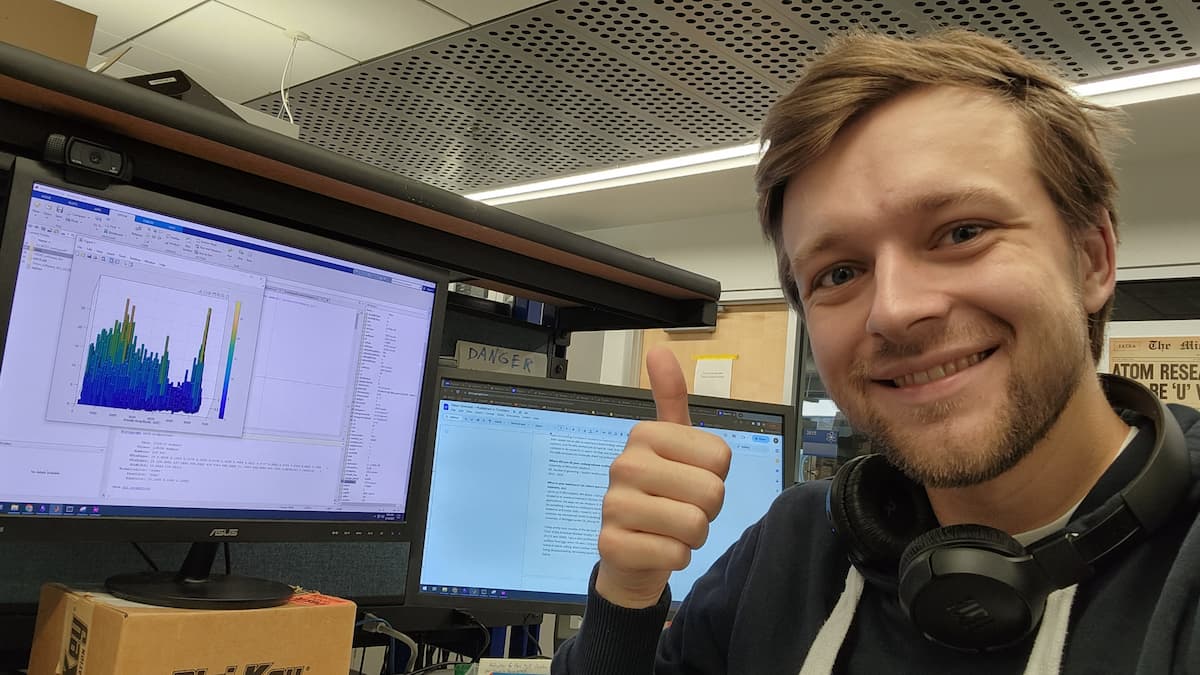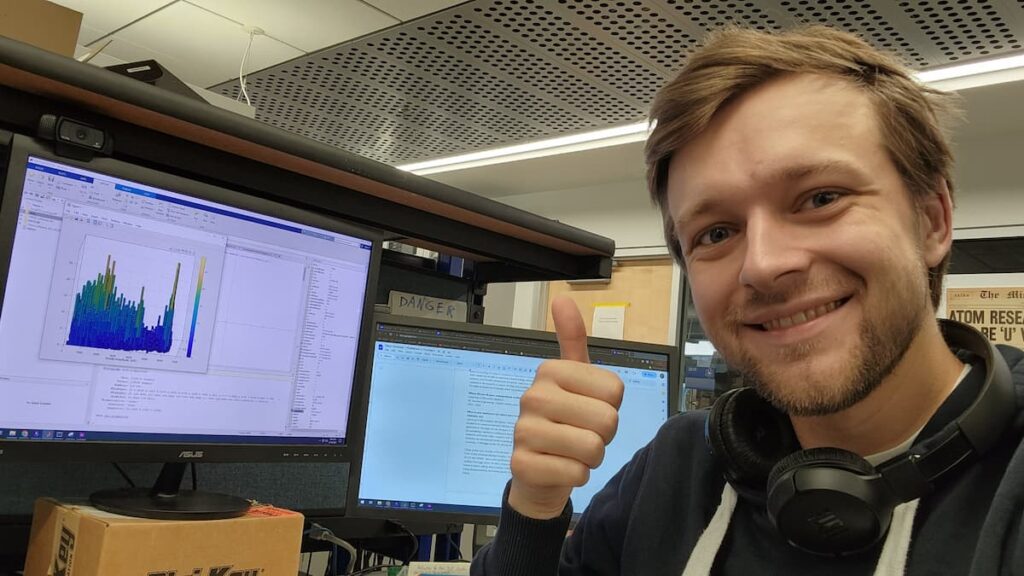
PhD student Peter Hotvedt co-authored paper published in Frontiers in Physiology
The paper examines the intricacies of asthma and its impact on lung ventilation.

The paper examines the intricacies of asthma and its impact on lung ventilation.

NERS PhD student Peter Hotvedt’s research was published in the August 2023 issue of Frontiers in Physiology. Peter co-authored the paper, “Comparison of hyperpolarized 3He-MRI, CT based parametric response mapping, and mucus scores in asthmatic,” which examines the intricacies of asthma and its impact on lung ventilation.
Asthma is a respiratory condition that varies greatly from person to person and even within an individual’s lungs. One puzzling aspect of asthma is the uneven distribution of air in the lungs, known as ventilation heterogeneity. Peter and his team aimed to uncover the connection between areas with poor ventilation and regions where air becomes trapped, within the context of mucus blocking airways, a common issue in asthma.
The team studied 34 asthma patients (with different severity levels) and 4 healthy individuals. Cutting-edge technologies were used, including special MRI imaging with hyperpolarized helium-3 gas and CT scans. The team assessed ventilation problems and air trapping in the lungs using sophisticated algorithms. They also looked at lung segments and lobes to pinpoint specific areas of concern.
The findings revealed that areas of poor ventilation were often linked to regions of air trapping in the lungs. This connection held true on a global scale, as well as in specific lung lobes. The study also highlighted that segments of the lungs with airway blockages due to mucus tended to show more signs of ventilation defects than regions without blockages. This suggests that mucus contributes to obstructing airways and negatively affecting lung function.
This research provides valuable insights into the intricate relationship between ventilation defects, air trapping, and mucus blockages in asthma. By analyzing lung segments and lobes, the study offers a clearer picture of how these factors interact within the lungs. Ultimately, these findings pave the way for a deeper understanding of asthma’s underlying mechanisms and potential avenues for improved treatment strategies.
Peter had this to say about being published:
It’s difficult to concisely describe the feeling I have when I consider the fact that I have been able to contribute to the advancement of science and technology. It brings me joy to know that I will potentially have a positive impact on the lives of others who might never know I exist. It makes me excited to see that the work I did as an undergraduate student was valuable and meaningful when it often felt like using a fork to chip away at a brick wall. It gives me the confidence to continue doing research because I have tangible proof that I am capable of doing the difficult work that is required in the scientific process. It reminds me that I would not be able to experience these feelings without the trust of my co-authors, mentors, and PIs who worked just as hard as, if not harder than, I had. And, of course, it motivates me to continue to do research, to search for that next breakthrough, and to continue to practice the skills necessary to eventually share my endeavors with the rest of the world.
Hailing from the University of Wisconsin–Madison, Peter honed his expertise in radiation and its multifaceted applications and graduated with a BS in Nuclear Engineering and Applied Mathematics. Guided by NERS prof. Dr. Zhong He, Peter’s graduate studies at U-M revolve around researching the ways we can measure radiation, a topic he has been interested in since growing up in Minneapolis, Minnesota.
Peter is the Vice Chair of the American Nuclear Society’s Student Section Committee. He’s also a student member of the Institute of Electrical and Electronics Engineers and the Institute of Nuclear Materials Management. Beyond academia, his endeavors extend to voice acting, long-distance running, and discussions about nuclear topics on platforms like twitch.tv. In his free time, he also enjoys (and sometimes does not enjoy) watching and being disappointed by Minnesota sports teams, and telling the cat to not destroy his bed frame.

At NERS, Peter has been involved in some departmental service work, including serving on the Faculty Search Committee for the 2022–2023 hiring cycle and speaking at a Colloquium about his experience being a Student Social Media Ambassador at the 2022 IAEA Ministerial Conference. This fall he will be grading NERS 311—Elements of Nuclear Engineering and Radiological Sciences I.
Looking to the future, Peter’s aspirations are firmly grounded in research, communication, and societal impact. Armed with his NERS PhD, he envisions a path paved with positive transformations and safety advancements. National labs and federal agencies beckon as potential arenas where his expertise could influence national security decisions and catalyze awareness about innovative technologies.
In reflecting on his journey, Peter extends gratitude to his co-authors, mentors, and peers who have been integral to his success. “As with the authors of the paper, I have to first thank Dr. Katie Carey, one of my undergraduate research mentors,” said Peter. “Her patience while teaching me the best research practices and her willingness to clarify topics while making me feel comfortable to ask questions and make mistakes has proven invaluable in my career path up to this point. I also have to thank Dr. Sean B. Fain, my undergraduate PI. Dr. Fain was willing to let a wacky undergraduate student play around with this data set for almost two whole years and was able to support me either financially or with course credits the whole time. Without his trust and guidance, I would not be here at the University of Michigan.”
Other authors of the study include Katherine J. Carey (University of Wisconsin–Madison), David G. Mummy (Duke University), Kristine E. Lee (University of Wisconsin–Madison), Loren C. Denlinger (University of Wisconsin–Madison), Mark L. Schiebler (University of Wisconsin–Madison), Ronald L. Sorkness (University of Wisconsin–Madison), Nizar N. Jarjour (University of Wisconsin–Madison), Charles R. Hatt (U-M Department of Radiology), Craig J. Galban (U-M Department of Radiology), and Sean B. Fain (University of Iowa).
“And now it is time for me to return to the trenches and keep chipping away at the newest brick wall before me,” said Peter. “Luckily my previous chipping utensil, a fork, has been replaced with something a little more effective, a chisel. I look forward to future publications as I have no intention of stopping now that I’ve had a taste of what it’s like to have published work.”